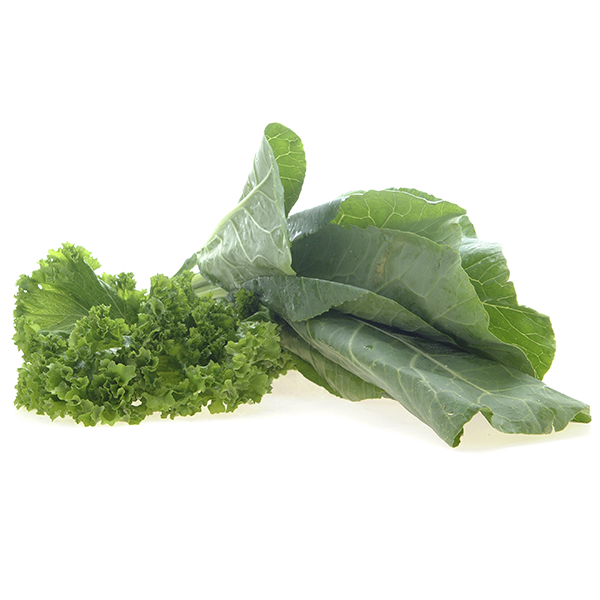
Shoppers may not always think leafy greens are the most exciting of vegetables, so educate them about the different types of greens, from dandelion greens to mustard greens, to encourage them to think beyond kale. Display greens next to other salad vegetables to get consumers thinking about using them in salads.
Shipping
Collards and dandelion greens 30- to 35-lb. 11⁄2-bushel and 13⁄5-bushel cartons 20- to 25-lb. bushel baskets/crates/cartons 12 to 24 bunches crates/cartons Dandelions can be shipped loose or in bunches. Mustard greens At retail, mustard greens sometimes are offered washed and clipped in film bags of varying sizes. RPC 6416, 6419, 6420, 6425, 6426, 6428, 6432
Grades
Collards U.S. No. 1 Dandelion greens U.S. No. 1 The standard is applicable to either plants or cut leaves, but not to mixtures of plants and cut leaves. Mustard greens U.S. No. 1 The grade applies either to plants or cut leaves but no mixtures of the two. Swiss chard Swiss chard is not subject to grading. Turnip greens U.S. No. 1
Handling
Temperature: 32 F, 0 C Relative humidity: 90-95% Mist: collards and kale Typical shelf life: 10 to 14 days Ethylene-sensitive. Do not store or transport with commodities that produce ethylene. Cracked ice around and in packages may help extend shelf life. Keep at proper humidity levels to prevent wilting. Collard greens should be handled like spinach. It’s normal for mustard greens to show a slight bronze tint.